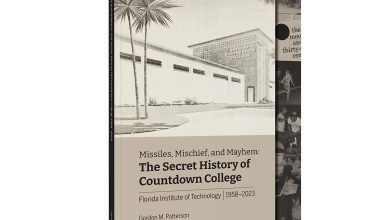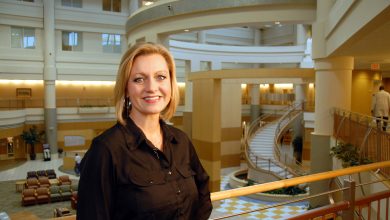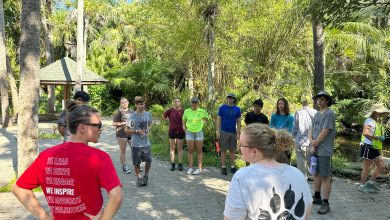Social Media and Space Communication
By Laura Fitzsimmons, Fasttrack in Communication/Global Strategic Communication
I vaguely remember going to Epcot’s space exploration exhibit when I was 10-years-old. The exhibits and hands-on activities sparked my initial interest in space travel. I remember thinking how cool it would be to travel to space and walk on the moon. But after tasting the packaged ice cream the astronauts eat in space, I quickly changed my mind.
Now that I’m older, I recognize how silly I had been, changing my mind about space travel based on the taste of the packaged ice cream. But to a 10-year-old, ice cream is one of the most precious things on Earth, so I’m not really too surprised by my thought process.
After what I have experienced this summer, my interest and excitement regarding space travel has been reignited. I have had some amazing opportunities and learned so much from the people I have interviewed and the places I have visited.
The first guest to visit our Covering Science and Technology course was Todd Halvorson. As senior aerospace reporter for Florida Today/USA Today, Halvorson had a lot of insight regarding what it takes to be a top journalist in the 21st century. Journalists don’t just write articles, they take pictures, post videos, and use social media constantly.
One of the challenges I faced was becoming more social media savvy. Even though I was born into this digital world, I rarely use my Facebook and had never attempted to create a Twitter account. But one of our tasks for this class was to post and tweet interesting facts and tidbits that we came across during our visits to NASA and ESTEC and while doing our research.
At first it was hard to believe that my instructor actually wanted her students on Twitter and Facebook, but now I see how fun it was to post, tweet, and share the interesting information I learned with my fellow classmates. And I think it will make me all summer to get Dr. Edwards’ commands to “post and tweet!” out of my head!
Visiting NASA’s Kennedy Space Center and ESTEC’s European Space Agency in the Netherlands were two unique experiences. Interviewing Chris Cassidy while he floated in microgravity was a once-in-a-lifetime opportunity that opened my eyes to a different side of journalism. Touring ESA’s facility and speaking with ESTEC’s representatives was an informative and memorable experience as well. Both trips offered me new insights into science journalism and reinforced how interesting (and rewarding!) it can be.
Writing about science and technology can be a difficult task, as I learned within the first few weeks of this course. A science journalist must research their beat or topic and communicate effectively with their interviewees. Interviewing scientists and engineers can be tricky since these professionals are known to speak a different “language” compared to the general public. Understanding and defining scientific terminology and avoiding jargon were two of the main challenges I faced during this project. It was tempting to use scientific terms when writing my articles, and I had to constantly remind myself that I was writing for the general public and not an actual scientist.
I’ve always had an interest in writing about science, and I’m so glad I had the chance to take this course and expand my writing skills. I am also grateful that I had the opportunity to visit NASA and ESTEC, as these visits and their accompanying projects have opened my eyes to a different side of journalism. I am looking forward to applying this knowledge to my future writing courses as well as my writings for Florida Tech’s newspaper the Crimson.





